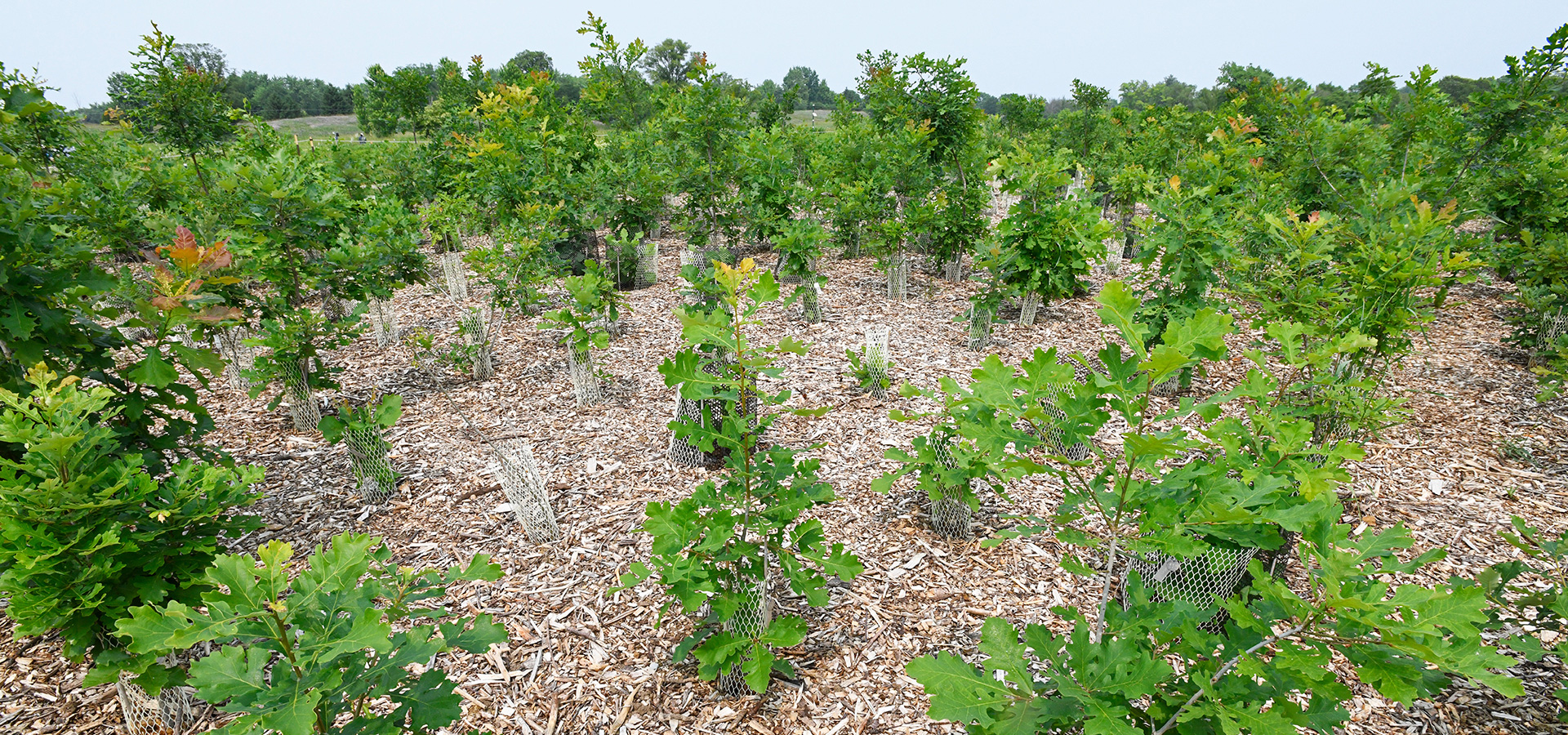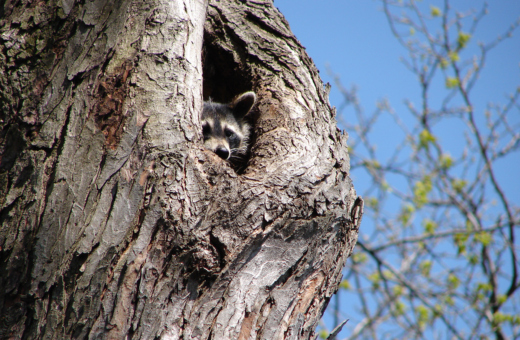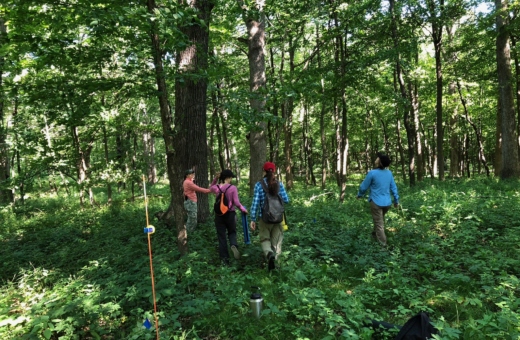September 28, 2023
Nestled in the back of a private research field at The Morton Arboretum, an experiment is underway to understand the curious growth habits of bur oak trees (Quercus macrocarpa) through a mix of genetic and observational research.
Arboretum scientists, headed by Andrew Hipp, PhD, director of the Herbarium and senior scientist in plant systematics, are collaborating with researchers from the University of Minnesota, the University of Oklahoma, Duke University, the Fort Collins Science Center, and the U.S. National Phenology Network as part of a five-year National Science Foundation grant to study the stately oaks. Together, they aim to answer important questions about the role of bur oaks in local environments and how our changing climate may affect the future of forests.
Collaborating Across Environments
To unravel these questions, the collaborators have established an experiment called a “common garden” in three different locations. This kind of experiment, called a reciprocal transplant study, involves swapping or moving organisms from one environment to another to understand how they are influenced by their surroundings.
In early April 2023, Arboretum research coordinator Mira Garner led a team of scientists and volunteers to plant more than 400 bur oak seedlings to complement 900 others that has been planted in 2021. Hundreds of miles away, two more plantings occurred simultaneously in Minnesota and Oklahoma. The goal is to understand how well these majestic oaks adapt to their local environments across their wide range. For example, will the bur oaks from Minnesota, which are adapted to withstand cold, snow-filled stretches of the year, thrive and grow tall in the warmer Oklahoma environment?
The collaborators collected bur oak acorns from trees across Minnesota, Illinois, and Oklahoma in 2018 and 2019. After germination, the seedlings were nurtured in a greenhouse in Indiana until they were ready for planting in the three separate gardens in two phases in 2021 and 2023.
Over the next three years, researchers will measure various factors, such as the survival and growth of each tree and the presence of underground fungi on their roots. By measuring the same variables from all three gardens, the scientists hope to answer key questions about the genetic variation in bur oaks across their range and how this variation shapes the overall diversity of forests.
Why Bur Oaks?
Bur oaks are ideal for this study because they have one of the broadest ranges among U.S. oak species, from Texas to Manitoba. They have evolved in and adapted to many different climates over millions of years. Depending on their origin, different populations of bur oaks can thrive in remarkably different conditions, and they often display slightly different characteristics from one another.
By comparing how these different populations grow in the same gardens over time, the researchers can investigate whether bur oaks possess special adaptations to their specific environments.
The Importance of Oaks in Illinois
Oaks play a significant role both locally and globally. The research conducted at The Morton Arboretum not only helps us better understand, cultivate, and protect oak trees, but also provides valuable knowledge and techniques that can be applied to other tree species. If we don’t ask these fundamental questions, scientists around the world won’t have the foundation of knowledge to ask more applied questions. This knowledge contributes to creating a healthier and more beautiful world.
While the research plots are not accessible to the public, you can still experience the beauty of bur oak trees across the Arboretum’s extensive 1,700-acre grounds. Bur oaks are native to the region and were once prominent in local oak savannas, oak woodlands, and bottomland forests in southern Illinois. If you’d like to see mature bur oaks up close, visit our nationally-recognized Oak Collection. You also can deepen your understanding of oaks through a free online course that explores why The Morton Arboretum is a leader in oak preservation.



